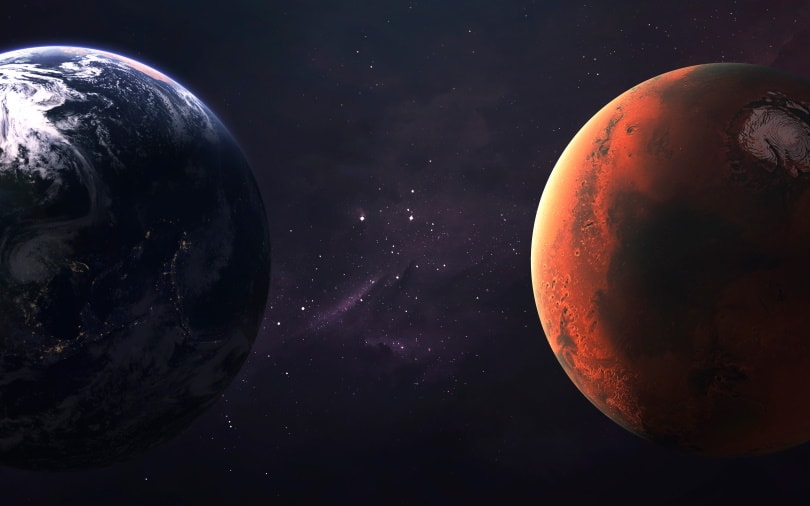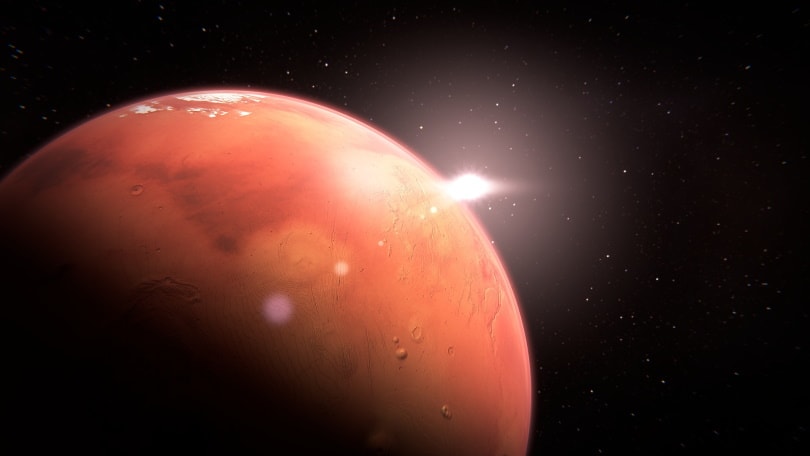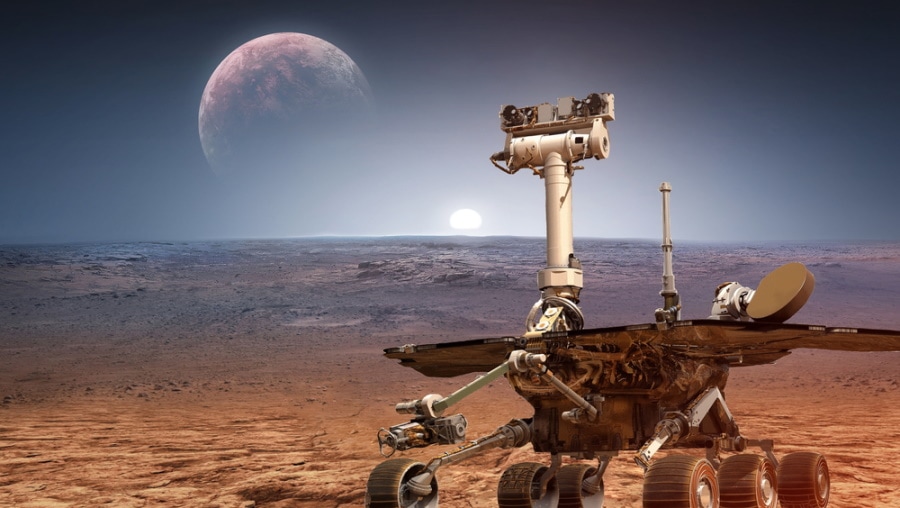Is Mars Bigger Than the Earth? How Big is it?
Last Updated on

Mars is the fourth planet from the Sun and is characterized by its red, dusty, and terrestrial surface. With a radius of about 2,106 miles1, Mars is roughly half the size of Earth. While Mars is much smaller than Earth, it has a comparable amount of land mass. This is because Mars does not have oceans like Earth, which cover a significant portion of its surface. Continue reading to learn more.

How Far Is Mars From Earth?
On average, Mars is roughly 1.5 astronomical units (AU) from Earth, with one AU defined as the distance between the Earth and the Sun. Roughly, this corresponds to an average distance of 142 million miles. If we were to set our GPS to Mars, it would take us roughly 6 months to arrive!

The Martian Surface
Mars is characterized by a desert-like terrain that gives the “Red Planet” its signature color. With hues of red, orange, brown, gold, and tan, Mars appears red in color when we look at it. The color of Mars is due to the iron content in its rocks, which rusts due to a process called oxidation. Dust from these rocks is kicked up into the Martian atmosphere due to the winds and dust storms on the planet, giving Mars its signature shade of red. Some Martian rovers have even discovered traces of green on its surface, which are certainly not due to plant life. Scientists are unsure of what causes this green coloration but are hopeful to uncover the reason why as we explore Mars more.
Due to the weather and ancient geological activity on Mars, its landscape has been altered over the course of billions of years. With topographical features such as volcanoes, basins, canyons, and mountains, the Martian landscape could easily be mistaken for the rocky deserts of the southwestern United States. The presence of dust storms on Mars has also eroded its landscape, giving it a unique and ever-changing appearance.

The Martian Moons
Even though Mars is smaller than Earth, it has captured two small moons. The Martian moons are named Phobos and Deimos, which get their names from the horses that pulled the chariot of Ares, the Greek god of war. Both moons are irregularly shaped, meaning they’re more “potato-like” than round, like our moon. This is because Phobos and Deimos do not have enough mass to maintain hydrostatic equilibrium, which causes celestial bodies to maintain a spherical shape.
Phobos, the larger and innermost moon, has deep grooves and is dotted with craters. Phobos is also on a collision course with Mars and expected to collide with the planet in several million years, when it will likely become a planetary ring. Deimos, however, is about half the size of Phobos and smoother in appearance due to the fine and loose dirt covering its surface. This dirt tends to fill Deimos’ craters in, giving it a much different appearance than its sister moon.


Conclusion
Even though Mars is small in stature, it has a huge planetary personality. With global dust storms, soaring mountains, deep canyons, vicious volcanoes, extreme temperatures, and an eerie blood-red color, Mars is truly a fascinating planet. The Red Planet is roughly half the size of Earth, but interestingly, has a landmass that is comparable in size. Even though we have sent plenty of missions to Mars in the past, there is still much left to explore. Who knows what mysteries we will unlock next?
Featured Image Credit: Vadim Sadovski, Shutterstock
About the Author Robert Sparks
Robert’s obsession with all things optical started early in life, when his optician father would bring home prototypes for Robert to play with. Nowadays, Robert is dedicated to helping others find the right optics for their needs. His hobbies include astronomy, astrophysics, and model building. Originally from Newark, NJ, he resides in Santa Fe, New Mexico, where the nighttime skies are filled with glittering stars.
Related Articles:
15 Crucial Facts About Ultraviolet Rays & the Sun
What Constellation Is Spica In? The Interesting Answer!
10 Interesting Leo Constellation Facts, Myths, and FAQs
15 Interesting Pegasus Constellation Facts, Myths, and FAQs
6 Interesting Sagittarius Constellation Facts, Myths, and FAQs in 2024!
What Are Constellations? Where Did They Come From?
8 Interesting Libra Constellation Facts, Myths, and FAQs
What Is Infrared Radiation? Science-Based Facts & FAQ
